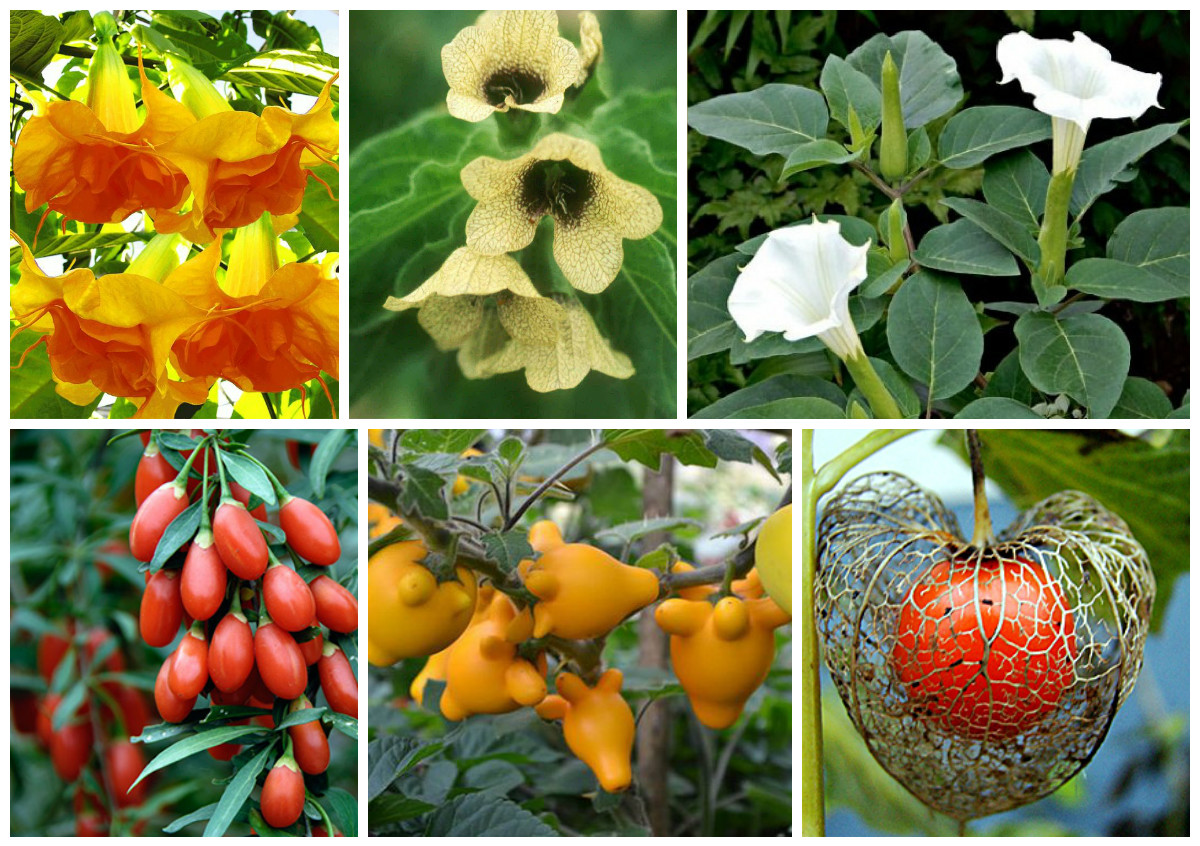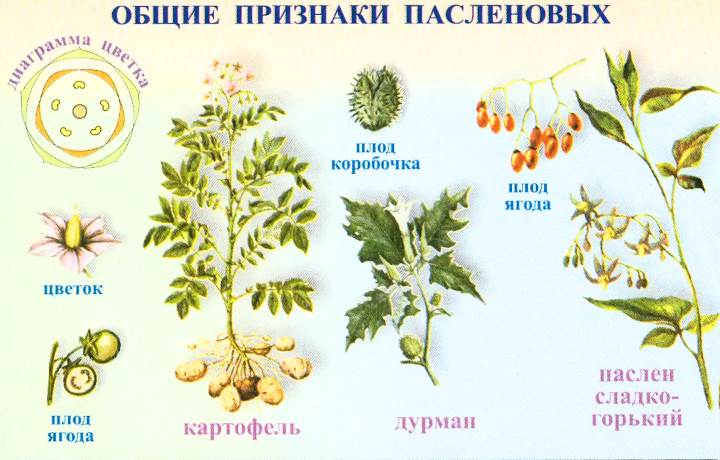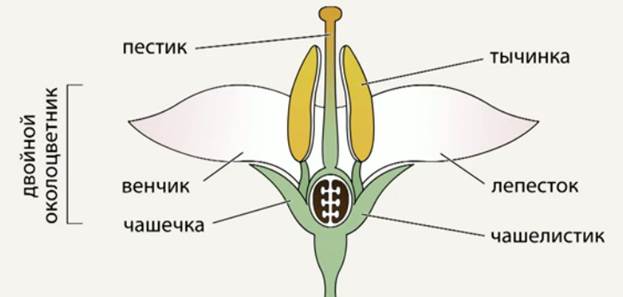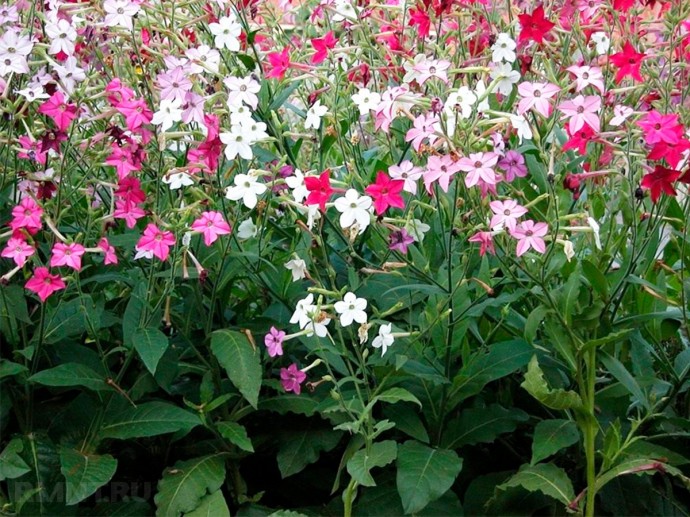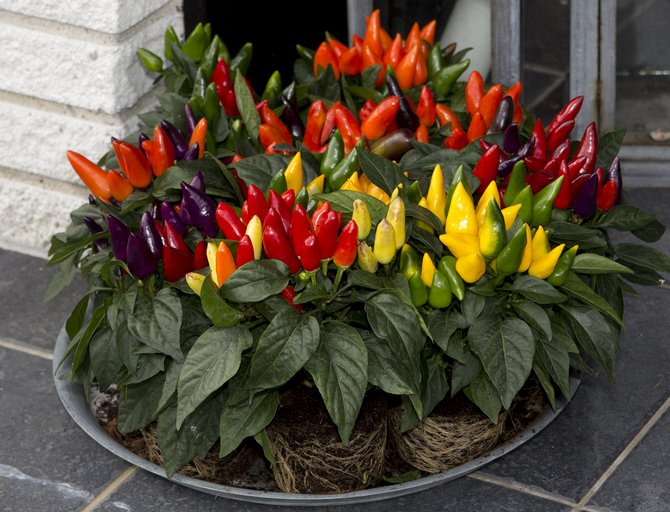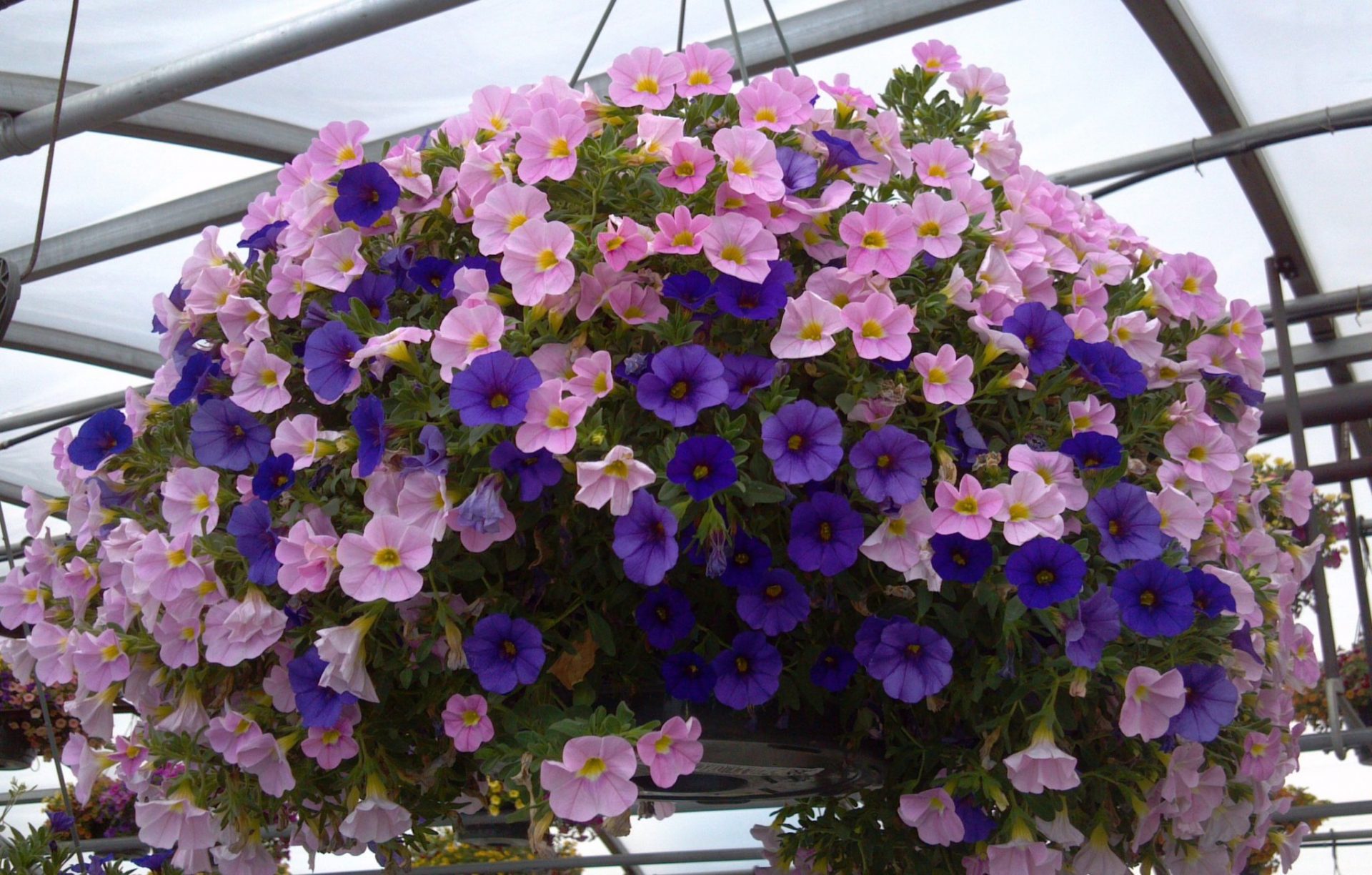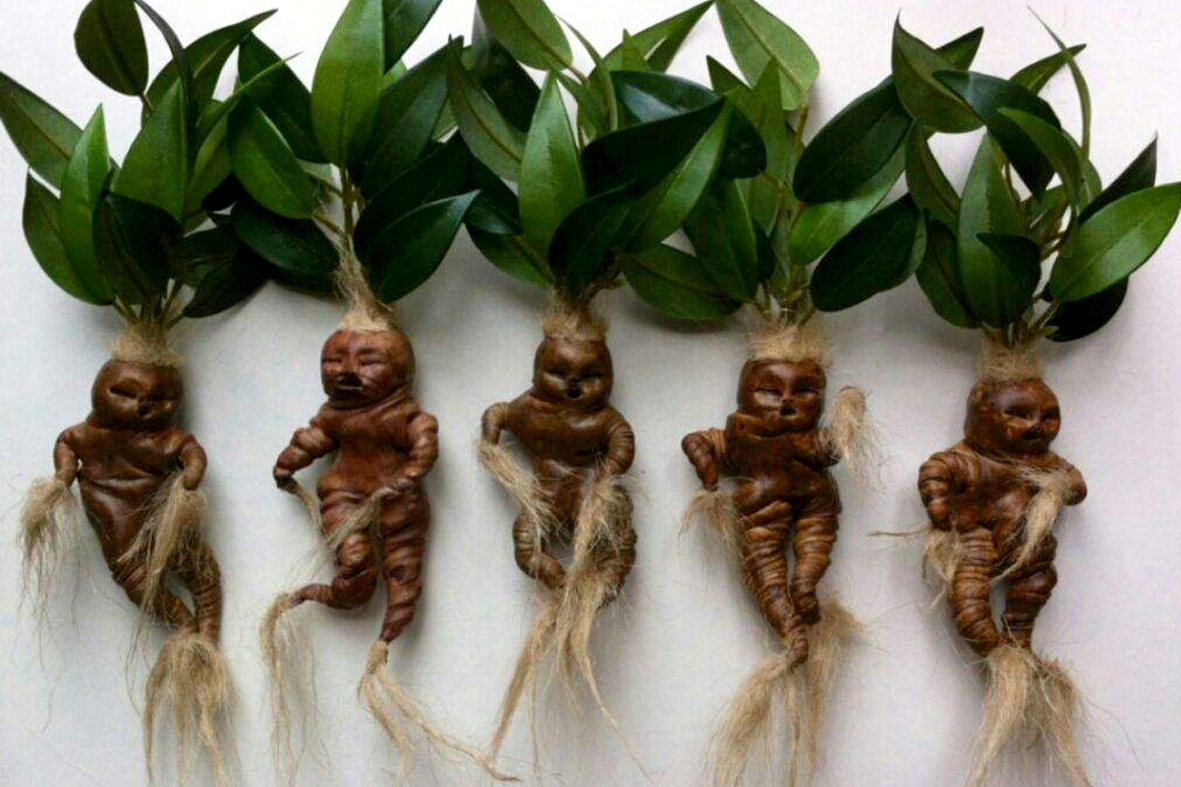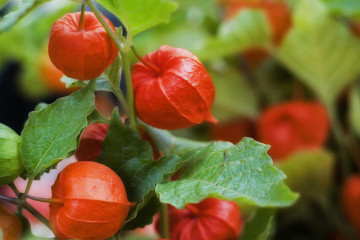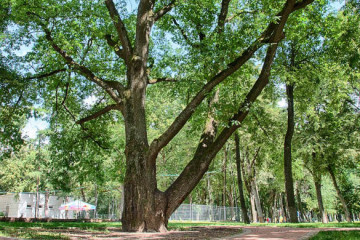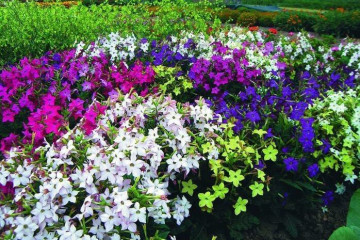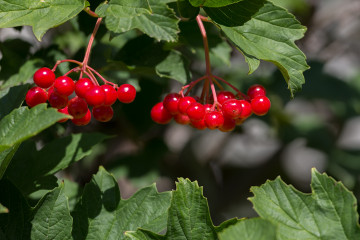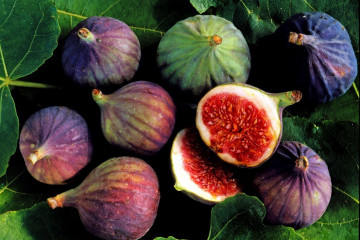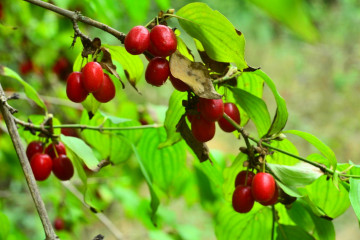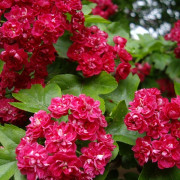Solanaceae family - signs of nightshades
Content:
Solanaceae are a diverse family that includes edible cultivated vegetables (potatoes, tomatoes, peppers, eggplants), ornamental flowers, medicinal and poisonous wild herbs. The poison contained in most representatives is capable of killing an adult, but is often used in official medicine. More interesting facts about nightshades - in the article.
Characteristics of the nightshade family
Solanaceae are a family of plants with 115 genera and more than 2,700 species for 2019. People encounter many of them every day: indoor flowers, common vegetables, tobacco and medicinal plants.
Representatives are divided into three life forms:
- herbs;
- shrubs (erect and creeping);
- trees (nightshade or acnistus).
Together with the "bindweed" family, they form the general order of the nightshade.
Features of nightshade plants
Mostly representatives have a delicate pleasant aroma. Poisonous species are partially covered with glandular cells and exude a pungent odor.
A dangerous dose of alkaloids is found in henbane, dope, and belladonna. Poisoning provokes fever, headache, dizziness, diarrhea. With a prolonged reaction, the function of the thyroid gland is disrupted, the tissues of the digestive organs are damaged, and vision deteriorates.
Actions in case of poisoning: call an ambulance, then drink water with some absorbent and induce vomiting.
Signs of the nightshade family
The family belongs to the class of dicotyledons. This means that the embryos of plant seeds have two lateral cotyledons. Monocotyledonous plants, as the name suggests, have one lobe. Representatives of monocots are quite similar in their characteristics. Solanaceae are very different from each other, but a number of common features can be distinguished.
Characteristics of the nightshade listed in scientific presentations:
- leaf shape: smooth, toothed, notched or in the form of lobes;
- below and in the middle of the stem, the leaves are located singly, in the flowering part - in pairs;
- inflorescences are medium-sized curls, often with a scattering of flowers;
- the calyx most often has 5 leaves, less often from 4 to 7;
- the whisk can be in the form of a wheel, saucer, funnel.
Nightshade fruit
Fruits in berries (pepper, nightshade, eggplant, potatoes, physalis, etc.) or in capsules (tobacco, petunia, belladonna, henbane, dope). The boxes are opened along the shutters. The seeds are reniform and contain a large amount of protein.
Solanaceous plants inflorescence
Inflorescence types - curl or gyrus. Flower formula: * H (5) L (5) T5P1. Value:
- calyx consists of five fused sepals;
- the corolla consists of five fused petals;
- the number of stamens adherent to the petals is five;
- the pistil is one.
Leaves of the nightshade family
Simple, lobed, sometimes dissected. Arranged alternately on the stem. Stipules are absent. Some representatives are covered with hairs.
List of nightshade crops:
Herbaceous plants
The Solanaceae family, with more than 2,600 species, consists primarily of herbaceous plants.
- mandrake;
- tobacco;
- eggplant (dark-fruited nightshade);
- potatoes;
- bitter and sweet peppers;
- bittersweet nightshade (wolfberry);
- scopoly;
- false-pepper nightshade;
- ampel calibers;
- jasmine nightshade, etc.
Vegetable plants
Vegetable nightshade plants:
- Potatoes. The tubers of the plant are used for food, which are modified underground shoots. In vegetable gardens, potatoes are traditionally propagated using tubers, but cultivation using seeds is possible. The fruit of a potato is an inedible greenish berry with seeds inside.
- Eggplant. Wild plants are perennial, and cultivated ones are perennial. Botanically speaking, the blue fruit is a berry. Most often, unripe fruits with a lilac-purple color are used for food. After fully ripening, the eggplant peel acquires a brown-green color, and the fruit itself becomes tough and tasteless.
- Capsicum (sweet and bitter). The alkaloid capsacin gives the vegetable a pungent taste.
- Tomatoes (tomatoes). As in the previous case, the fruits are berries, not vegetables.
Other edible nightshades that are not vegetables:
- Melon pear. In Russia, it is found in vegetable gardens, but not grown on an industrial scale. The fruits have a sweet taste and contain a large amount of vitamins, micro- and macroelements.
- Physalis. Botanical characteristics are similar to tomatoes. In the CIS, physalis is most often found in confectionery - it is used as a decor. Also, from the fruits that are hidden in the cups, you can make jam or pickles.
Decorative nightshade plants
This group includes indoor and garden flowers, shrubs and even vines. They are characterized by numerous large, bright flowers.
Many plants belong to the decorative nightshade.
Petunia
A plant widespread in the CIS with a lush flowering that lasts for several months. Has bright petals with spots or small blotches. The core is yellow or white. New buds form before October. Shoots hang down, so petunia is often used in vertical gardening.
Scented tobacco
The plant has relatively small but extremely fragrant flowers that open after sunset. Color - white or hot pink. For cigarettes and cigars, dried tobacco leaves are used, which contain a lot of nicotine.
Bittersweet nightshade
Ideal for placement near a pond, as it feels comfortable in high humidity. It has oblong pointed leaves. After flowering, it forms bright scarlet round fruits that persist from April to October.
Capsicum
An unusual houseplant known as house pepper. Fruits are red, yellow, white, orange or purple peppercorns. They have a pungent taste as they contain capsaicin.
Calibrachoa
A plant with abundant flowering. Has a look similar to petunia - bells of various colors. In the gardens, you can find purple, pale and bright pink, peach, yellow, red, white flowers and even a multi-colored mix.
Wild plants
The nightshade family consists of cultivated representatives and wild-growing ones. The latter category includes:
- nightshade black;
- bittersweet nightshade;
- dope ordinary;
- belladonna;
- henbane, etc.
Most nightshades are wild plants.
Medicinal plants of the Solanaceae family
Due to the high content of alkaloids, most of the wild-growing members of the family are poisonous. However, the poison is successfully used in pharmacology in small concentrations. An example of medicinal poisonous plants:
- belladonna;
- tobacco;
- henbane is black;
- mandrake;
- dope;
- scopoly;
- bittersweet nightshade;
- black nightshade;
- bird nightshade.
Not poisonous:
- chilli pepper.
The resulting alkaloids (hyoscyamine, scopolamine, atropine) are used to treat gastrointestinal diseases, peptic ulcer disease, diseases of the urinary system, asthma, and cholecystitis. In folk medicine, tincture and decoction of the root, powder from dried leaves are used.
Poisonous nightshade plants
Plants differ in the degree of toxicity of the poison and the place of its concentration. The most poisonous nightshades are listed below.
Belladonna
Popular names: Crazy Berry and Sleepy Stupor. The fruits are shiny black berries containing a high concentration of poison. The lethal dose for children is 3 berries. For adults - from 10.
Pain relieves and relieves spasms. Roots and leaves are used dried or fresh. In official medicine, the plant is a part of tablets and tinctures, in folk medicine - decoctions and compresses are made from it. Belladonna helps with stomach ailments, cholecystitis, Parkinson's disease.
Mandrake
The mysterious plant has been immortalized in medieval European myths. There were legends that this plant can scream and with its scream can kill a living creature. It has an unusual shape - its roots strongly resemble a human figure. They contain scopolamine, another type of alkaloids that is used in modern pharmacology.
Datura ordinary
A genus of annual grasses belonging to the nightshade family. Poisonous medicinal plant. Hyoscinamine is extracted from the leaves for anti-asthma drugs, and the seeds are a source of atropine, which is used in the treatment of diseases of the gastrointestinal tract, liver, gall bladder and urinary system. The reason for the harmfulness of dope is poison, which has hallucinogenic properties. It is found in stems, roots and seeds.
Black henbane
It is used in the composition of tablets for air and seasickness. Rhizomes and leaf extracts are used in the treatment of stomach ulcers, liver disease and vision problems. All parts of the plant are poisonous: flowers, seeds, stems, leaves, roots. The peak of toxicity is late spring.
Cultural plants of the Solanaceae family
The family can be divided into wild and cultivated plants. Cultural ones are obtained from wild ones using scientific methods: selection, genetic engineering, creation of hybrids. What concerns cultivated nightshades:
- potatoes;
- eggplant;
- tomatoes;
- capsicum;
- smoking tobacco.
They have long been grown by humans for food, animal feed, medicines, cosmetics, cigars and cigarettes.
Solanaceae are plants that people encounter on a daily basis. Wild and cultivated members of the family are beneficial in the composition of medicines and food, and decorative species transform the home.
